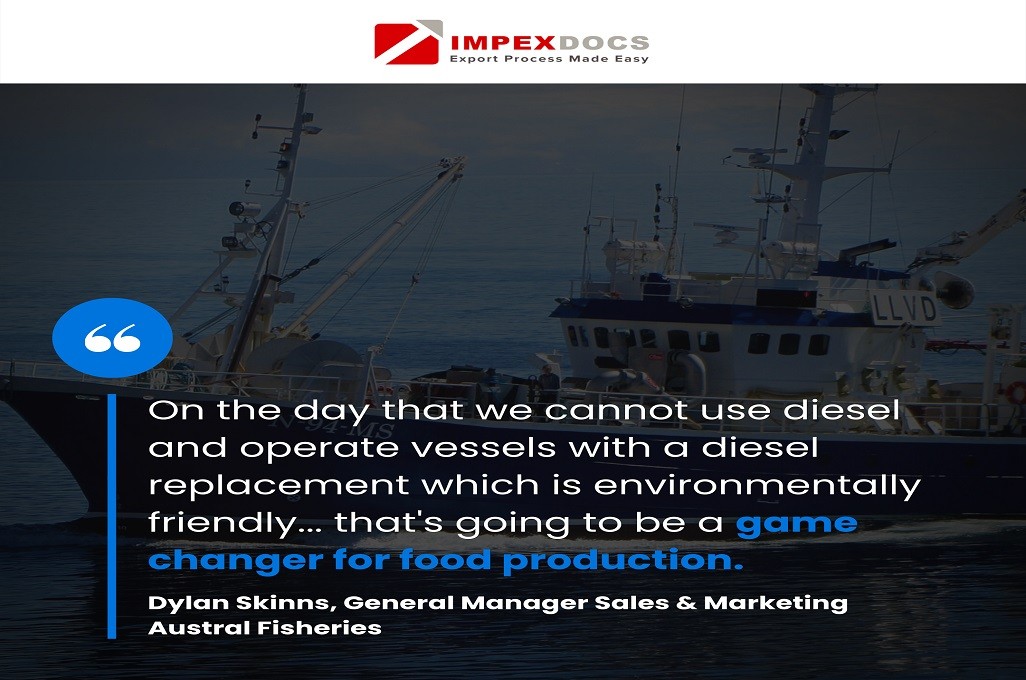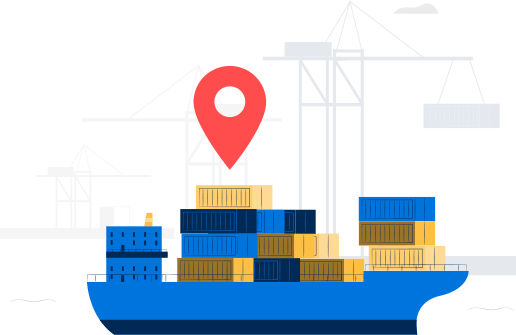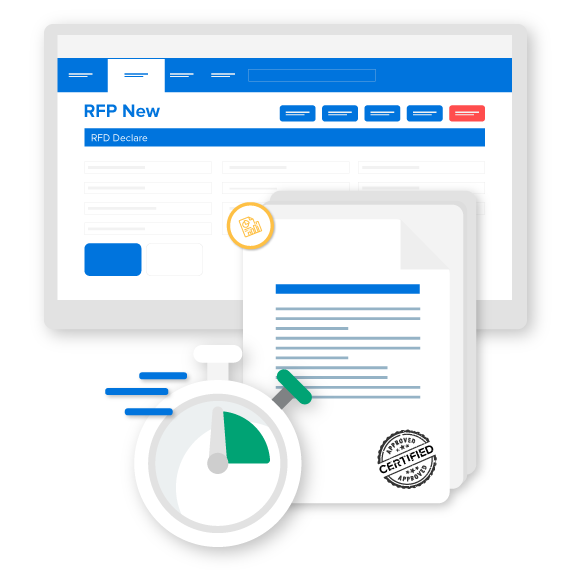
18 Aug
Welcome to the Global Trade Made Easy podcast where we speak to global trade leaders, innovators, and influencers from around the world and Australia. We discuss ideas that can disrupt your organisation, industry, or career.
In this first episode, we welcome Dylan Skinns, General Manager of Sales & Marketing at Austral Fisheries. Austral Fisheries is one of the largest fishing organisations in Australia and the southern hemisphere.
Dylan reveals:
- Challenges the business has faced during the pandemic and post-pandemic
- How Austral Fisheries are overcoming bottlenecks with freight and logistics
- Strategies to better meet demand in a global economy
- How Austral manage significant price increases
- Capitalizing on free trade agreements to remain competitive in the marketplace
- The 3 key areas that Austral Fisheries is concentrating on over the next 12 months
- The growth strategy that focuses on a new emerging shopper
- How Austral Fisheries differentiated themselves in the market through branding and positioning
- Why understanding your market is critical for success
[00:00:00] Tejas Oza, ImpexDocs: Hello, and welcome to the Global Trade Made Easy podcast. In this podcast, we speak to the global trade leaders, innovators and influencers from around the world and Australia. We talk about ideas that can disrupt your organisation, industry, or even careers. So let’s dig in.
In today’s show, we are going to speak to Dylan Skinns from Austral Fisheries. Austral fisheries are one of the largest fishing organisation in Australia and probably the Southern Hemisphere. So I would like to welcome Dylan.
Dylan, welcome to the show.
[00:00:35] Dylan Skinns, Austral Fisheries: Thank you. Thanks for having me.
[00:00:36] Tejas Oza, ImpexDocs: Dylan, tell us about Austral Fisheries, and what does it do as an organisation?
[00:00:41] Dylan Skinns, Austral Fisheries: Headquarters are based in Perth here in Western Australia.
And as you said, we’re the largest producers of wild-caught seafood in Australia. We have vessels that operate all around the country and we sell lots of our catch on the Australian domestic market, but we also export globally to around 15 countries, now. USA, China, and Hong Kong are probably the three biggest markets that we supply.
We’re famous for our Providence branded seafood, such as Glacier 51 Toothfish, the Skull Island Tiger Prawns and the Karumba Banana Prawns from in the north. And these can be found in some of the best Michelin star restaurants around the world.
[00:01:17] Tejas Oza, ImpexDocs: What is your role in Austral Fisheries? What do you do?
[00:01:21] Dylan Skinns, Austral Fisheries: I’ve been with Austral Fisheries for 20 years now. And I’m now the General Manager of Sales and Marketing for the business. I started as a deck hand with Austral back in 2002. And now I’m managing a sales portfolio of around 120 million dollars.
[00:01:37] Tejas Oza, ImpexDocs: How does your team look like, you being the General Manager Sales and Marketing? How do you operate?
[00:01:41] Dylan Skinns, Austral Fisheries: We’ve got quite a, a big footprint on the world stage of supplying seafood. We’ve only got a really tiny team. In sales and marketing we have myself and then four individual sales reps for different areas. And then in the export stocks, we have two or three people there running that side for us.
[00:01:59] Tejas Oza, ImpexDocs: We have been in uncertain conditions, pandemic and post pandemic. What has been your experience of last, let’s say 12, 24 months?
[00:02:07] Dylan Skinns, Austral Fisheries: Right now business is fun again. You can actually get out and meet customers and travel, but it’s still frustrating.
There’s a lot of business still to be done, but we’ve got a lot of logistical hurdles. Short supply, lack of manufacturing of important consumables to keep your business going.
People that’s been number one for us. Been the most important challenge in Australia, not just our business, but ensuring we have enough people to keep the business going and attracting new talent for the future.
Securing enough consumables like packaging and vessel parts to keep the business going. If your lead time for say packaging was two months previously, it’s now six months. So you’ve really got to stay on top of that.
Controlling the increasing costs at the moment. The price of diesel, for example, you know, that’s running amok. It’s gone through the roof for our vessels.
Freight. Freight in general has been pretty tough, export and local. We’ve had many challenges with the lack of containers, limited vessels, truck drivers with COVID, missing pallets. It really is a nightmare part of the business. And for example, right now in Mauritius, we’ve got around 20 million dollars’ worth of Glacier 51 Toothfish sitting on the Wharf just because we can’t get a vessel to call past Port Louis to pick it up. Container ships are emitting the port because they’re full or they’re required to go to a different part of the world. So that’s been really tough for us.
They’re some of the challenges that we’ve been faced with.
[00:03:25] Tejas Oza, ImpexDocs: How are you managing the situation?
[00:03:27] Dylan Skinns, Austral Fisheries: Freight and logistics area has been the real bottleneck.
So we’re offering as much support as we can into that area. Talking to others out there, if your budget allows, perhaps add an extra person into that area. Add some extra horsepower there to ensure your business can keep going along. As I said, it’s been a real bottleneck.
I know we’ve got a really small team that’s under the pump every day, getting product on ships and trucks and punching out the documentation that’s required.
We’re splitting up our team a little bit, over time, because we work globally. We’ve got a lot of emails coming in 24/7. So you can’t just have your people in for that eight hours a day. We split up our team a little bit just to stay on top of emails there.
The other thing that we’re doing is the significant increase in costs. We’re making sure that our team are retaining and rechecking quotes on freight and logistics all the time. We’re finding major differences between all the different service providers. Definitely have to keep on top of that. The prices are acceptable one week, but next week they’re not so palatable. So really stay on top of that. That’s really about it.
[00:04:25] Tejas Oza, ImpexDocs: I understand you are now in 15 countries. In this last, let’s say a couple of years, did you have to find new markets or how did you go about revenue side of things?
[00:04:33] Dylan Skinns, Austral Fisheries: Tried to support the markets that have traditionally supported us over the years, not really go and look for new markets.
China was a big market for our product and during COVID we actually we lost a lot of supply there. But we did manage to divert a lot of our toothfish and prawns into the US.
So I sort of just pivot there. But luckily for Austral, our catch was pretty much split retail and food service. If your business was only supporting food service during COVID, that’s when it was a bit of a struggle and you had to pivot and try and find some retail sales. So we were lucky that we had some business in retail already, and we just pump the retailer a little bit more during COVID until the restaurant scene came back.
[00:05:12] Tejas Oza, ImpexDocs: My assumption at the moment is that because the freight is increasing for everybody, not just in Australia, would it mean that from a competitiveness perspective, would we be similar to other suppliers or other countries? Or how do you see that?
[00:05:26] Dylan Skinns, Austral Fisheries: Yeah, I think every country’s having the same freight issues. We’re capitalizing on the countries where we’ve got the free trade agreements in place as well. So that’s having a more positive impact on our sales, but yeah, definitely, I think everyone’s having issues with freight. Just finding containers to put your product in.
[00:05:42] Tejas Oza, ImpexDocs: Looking at the future and even the present, what do you see seafood industry, the situation is, and how do you see the next few, couple of years?
[00:05:50] Dylan Skinns, Austral Fisheries: We’d like to have lots of growth, obviously, that would be nice, but I think the next 12 months will be just trying to keep things going best we can.
Controlling costs, getting product to our customers, and getting paid. Getting paid is a major priority.
Being in the wild capture sector, we cannot increase our catch to get more growth. We can only deal with what mother nature provides us each year. So it’s about operating smarter, not harder, and trying to maximize those returns.
But in the last couple of years during COVID we’ve seen two types of shoppers. Being that one that’s doing it tough, really watching their spending, buying cheap and affordable seafood where they can.
And then there’s another type of shopper that’s emerging. The one that’s really turning into that conscious sustainability shopper. One that seeks out the sustainability claims, plastic free recyclability, carbon neutral, animal ethics. They’re ultimately looking to make a difference with their purchase. Our strategy for growth over the next 12 months is marrying up our product offerings to consumers like this and aligning our sales with retailers and restaurants that value the value of our values. That’s our strategy for growth.
We’ve been working hard to eliminate plastic from our range of Packaging. We’ll make it a hundred percent recyclable. And our carbon neutral seafood also speaks to a growing area of demand, whilst looking after the planet.
[00:07:08] Tejas Oza, ImpexDocs: If I’m hearing you right, what your strategy is is premium market. Do you want to target the high end of the market, which is looking for sustainable premium product? As opposed to going after the cost conscious market segment. Would that be fair?
[00:07:21] Dylan Skinns, Austral Fisheries: Yeah, that’s right. Our products used to be commodity based and we probably didn’t know where they sort of fit and where they ended up.
About eight years ago, we made a conscious effort to try and brand all of our seafood with Providence and a real ocean to plate story. And that’s elevated the products onto that higher end niche markets around the world.
We like to think, you know, we’ve been told to look after this wild, last wild resource on the planet, so we take sustainability very seriously, and we believe that we are leaders in this space in terms of the production of that seafood and also the global distribution of that product.
So we basically have two pillars to our sustainability at Austral. First being, looking after the fish stock itself. So all of our catch, all of our wild catch, is independently certified sustainable by the Marine Stewardship Council in London. That’s an independent certification, which basically certifies that we’re looking after the fish stocks and harvesting the product in a sustainable manner. In terms of Glacier 51 Toothfish, as an example, it means that we’re only taking less than 10% of the biomass each year. So we’re really only scratching the surface down there every year.
But in addition to looking after the fish stocks and the fisheries resource, we are, and we’re the first seafood company in the world, to become certified carbon neutral. So a hundred percent of our carbon emissions are offset by planting 200,000 Australian native trees here in Western Australia each year to offset our emissions.
[00:08:53] Tejas Oza, ImpexDocs: I’m quite keen to know, what is that story?
[00:08:56] Dylan Skinns, Austral Fisheries: Yeah, a good example, you know, for a long time, I used to just sell tiger prawns as a commodity. And you would offer that to a customer based in Hong Kong. And he would ask you for the price and I’d say, oh, it’s 20 US dollars a kilo.
And he’d say, I can buy tiger prawns from your competitor at $18 US. So naturally, I had to come down to that level to meet the market and sell the product.
And we thought, you know what? This product’s a fantastic product. It’s got a great backstory. It’s wild, it’s caught in an amazing location. It’s got a great ocean to plate story. We should be branding this Providence story in the bid to try and get this on some of the best markets in the world. And get out of that price market, get into that brand market where they want it because it sells well.
With the tiger prawns that we catch, we actually catch them off an island, a real island called Skull Island in the Gulf of Carpentaria. So we branded all of our tiger prawn catch Skull Island Tiger Prawns.
The effect of that doesn’t happen overnight. Branding products is a three to five year journey, but now that brand is on some of the best menus around the world and people phone up and ring just to buy the Skull Island Tiger Prawns. We’ve elevated ourselves out of that commodity space. When somebody phones us up now and they want to buy Skull Island Tiger Prawns for 30 US, we can say, well, ours are actually 35. Really we’re the only shop in town that’s got that product. So it really has elevated us out of that commodity space.
[00:10:15] Tejas Oza, ImpexDocs: That’s a brilliant story. Okay, well done. I mean, this is what the exporters around the world and Australia would like to, you know, find what can they do to have their own stories. So it’s a fantastic story and I’m glad that we talked about that.
[00:10:29] Dylan Skinns, Austral Fisheries: Yeah. Well, the first one was Glacier 51 Toothfish. So that was the first product that we branded by Providence and everything we learned off that was then we went, wow, there’s some real ingredients in there to brand the rest of our product.
So yeah, Glacier 51 was the first product and then obviously Skull Island came behind that. Then Karumba. And this year we’re about to launch a couple of new brands as well.
[00:10:50] Tejas Oza, ImpexDocs: I also picked up on something in the news. You are also going hybrid in terms of boats.
[00:10:55] Dylan Skinns, Austral Fisheries: A lot of our boats are quite old. Built in the seventies. Not a lot of new technology. But we’re slowly replacing those now with new vessel builds.
The latest of our toothfish vessels, the Cape Arkona, basically a hybrid. So almost like the Prius of a fishing vessel. So it’s got almost like a big Tesla battery bank on board. So when that vessel’s alongside, we can just completely run off battery power and save on using diesel fuel.
But the future is to try and not use diesel at all. It’s a very exciting space, not just for fishing vessels, but all types of maritime vessels. On the day that we cannot use diesel and operate these vessels with a diesel replacement, which is environmentally friendly, that’s going to be a game changer for food production. I think it’s the first of its kind in the Southern Hemisphere, particularly in Australia. But in our Northern countries, I think they’re well advanced with that. Definitely diesel-electric vessels are quite common now with the new build. Aborting diesel altogether, that’s the future. And there’s a lot of projects underway at the moment, whether it’s fishing or shipping or just general maritime. There’s definitely a move towards that.
[00:11:57] Tejas Oza, ImpexDocs: How do you make your operations more efficient? Or what are the kind of improvements that you have done or you’re planning to do to lift the game?
[00:12:05] Dylan Skinns, Austral Fisheries: Reducing the amount of diesel that we use is definitely high on the list, but we work in wild capture fisheries. So we just can’t go and catch another thousand ton to increase our profits and margins.
We get what mother nature gives us or what the government has come up with and the scientists as a quota. So we only get a set amount of fish and prawns each year. So to increase your margins and profitability on that you really have to get smarter in the way you sell your product.
One through this Providence branding that we spoke about. Trying to get more money through that ocean to plate story. And secondly, really just controlling your costs. We spoke about that earlier.
More so than any other year, with the increases we’re getting this year, you’ve really got to have a team looking at that week to week to make sure that any increase you get in price from your branded products, that you’re not losing all that with the extra costs.
[00:12:52] Tejas Oza, ImpexDocs: So what sort of advice would you give to, let’s say, new seafood exporters, or even existing seafood exporters, your peers? You being one of the leading, or probably one of the largest, if not the largest, organisation in this industry.
[00:13:06] Dylan Skinns, Austral Fisheries: Post COVID, there’s been a lot of emails come in from different countries and different importers saying that they’re the biggest importer of XYZ seafoods.
So you’ve really got to be able to sift through all that, to work out who is actually the real deal in that particular country. So I would be getting a bit of a dialogue up with say a new customer there, having those zoom links and calls with them. But one of the best things we can do now, and if you feel comfortable with international travel, is get on a plane and get to your next trade show where you can do that face-to-face interaction again. I think we’ve all had enough of emails, WhatsApp, and LinkedIn and Instagram. It’s time to start being human again and visiting some of these potential clients.
Other areas of suggestion would be probably just to start small. If someone’s saying they can take three 40-footers of a particular product, take that with a grain of salt. Maybe start off with a small air shipment or a smaller light container. Always ask for at least a 30% deposit with any new business. Don’t ship anything off without any sort of deposit. Make sure you’ve got that covered, particularly with a new customer.
But depending on what sort of product it is, understanding those markets. Like in seafood, we know that US and Asia are big for us. Really focusing on the areas that are big on your particular product.
[00:14:16] Tejas Oza, ImpexDocs: Excellent. Thank you. That’s really good advice. Thinking of the new countries and then you did mention about the free trade agreements. Australia is about to sign a free trade agreement with India. I’m not sure what’s your view about that market?
[00:14:29] Dylan Skinns, Austral Fisheries: India are definitely on our radar and the free trade agreement there between the two countries will help.
For the last 20 years we’ve exported to countries outside of India, but India is a sleeping giant for me. I think a massive population, lots of cities, emerging hotel business. High-end hotel business. And with our products, we started at the start of the show there. They’re very high-end and niche, but we think there’s hotel groups and restaurant chains in India that would definitely benefit from these ocean-to-plate stories that we’ve got. We’ve just started doing some business in India this year. So our first container, sea freight container, of Glacier 51 Toothfish will be going to India next month, actually. That tells you that that market is starting to kick off. And once that FTA comes into place, I think we’ll see more and more business.
[00:15:15] Tejas Oza, ImpexDocs: I wish you all the best for the next period of time. We will see you when we are in Perth next time. Thanks for being on the show, and it was a fantastic conversation. So thanks a lot.
[00:15:25] Dylan Skinns, Austral Fisheries: Hopefully we provided some insights.
[00:15:27] Tejas Oza, ImpexDocs: Absolutely. I’m sure the exporters in the industry and others will benefit from this conversation. Thank you very much.
Dylan Skinns is General Manager Sales & Marketing of Austral Fisheries, Australia’s leading integrated commercial fishing company. Dylan has a wealth of experience in the seafood industry and has played a key role in developing Austral Fisheries’ commercial operations and driving growth in key markets. With a focus on delivering high-quality, sustainable seafood, Dylan is committed to Austral Fisheries being the most trusted and respected supplier of seafood. To learn more about Austral Fisheries, visit https://www.australfisheries.com.au/


